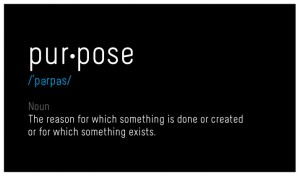Note: This blog was originally posted on the TVDSB Math portfolio’s website in their January 2016 newsletter. All I’ve done here is make the links they provided clickable and added a few more links that parents and teachers might enjoy looking at as we engage all our children (students) in the love of mathematics.
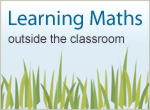 Educators are working hard to help each student in Thames Valley to grow and learn in math. However, we cannot do it alone and not nearly as well as when students are supported by resources and a caring circle of adults beyond the school. Math beyond the classroom matters …a lot!
Educators are working hard to help each student in Thames Valley to grow and learn in math. However, we cannot do it alone and not nearly as well as when students are supported by resources and a caring circle of adults beyond the school. Math beyond the classroom matters …a lot!
While facing 20 questions of math homework a night might present parents with an opportunity to talk about math with their child; research suggests that growth is stimulated not by the volume of practice, but by engaging in accessible problem-solving with proper tools to support the work. It is this accessibility and support that must focus our joint efforts.
EVIDENCE
The research suggests that engaging in mathematics outside of school hours has a significant impact on mathematics achievement. Crucial to that development is the level of commitment to that engagement and the nature of that engagement.
Participating in 30 hours annually of mathematics outside of school hours has been shown to correlate with significant gains in student achievement. This equates to a little over an hour each week.
More importantly, the nature of that engagement contributes to the gains. When students get to consistently engage in smaller groups on a variety of tasks (both collaborative and independent) that are accessible to them and focussed around important skills and concepts, the gains are larger.
For math beyond the classroom to have an impact, we actually don’t want it to focus on procedural drill; the gains are temporary and fragile. Research consistently shows that students master skills and concepts by building on a foundation of understanding, strategies, and confidence in solving problems.
IMPLICATIONS & RESOURCES
Encourage math talk at home and focus on understanding and strategies rather than answers. Consider opportunities for your child to participate in math clubs or homework help clubs outside of class time. Consider these free resources available to all parents at home or the public library:
Numeracy Focus: (a page on our own school website devoted to educational math links)
http://www.tvdsb.ca/EmilyStowePS.cfm?subpage=245891
Inspiring your Child to Learn and Love Math
www.ontariodirectors.ca/parent_engagement.html
Mathies (Tools, resources, and games designed for Ontario K–12 students and parents)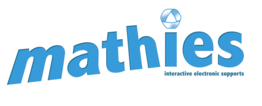
www.mathies.ca
Homework Help (free live tutoring online or on the phone with Ontario teachers)
https://homeworkhelp.ilc.org/
Partnering with Parents (National Council of Teachers of Mathematics)
http://www.nctm.org/News-and-Calendar/Messages-from-the-President/Archive/Linda-M_-Gojak/Partnering-with-Parents/
The Homework Zone:
http://homeworkzone.tvokids.com/hwz/math
Everyday Math: (check out the In Depth section – explains the how’s and why’s) 
http://www.math.com/homeworkhelp/EverydayMath.html
Math is Fun:
http://www.mathisfun.com/
The Adaptive Mind:
http://www.adaptedmind.com/Math-Worksheets.html?gclid=CKqq3te_n8oCFQmOaQodIU8MRA
If considering investing in math beyond the classroom resources, contact your School Parent Council to see what future partnerships might be possible to support your child’s understanding and confidence in math.
For more information see:
www.tvdsb.ca/mathematics
‘Parent engagement matters. Study after study has shown us that student achievement improves when parents play an active role in their children’s education, and that good schools become even better schools when parents are involved…’ (Ministry of Education, Parent Engagement)
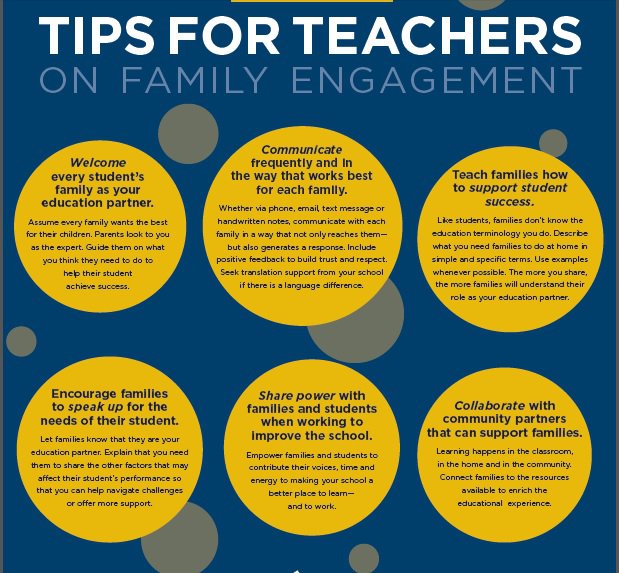
 beyond expectations this year in the many situations we find ourselves. Those pivoting to online learning again when we were so hoping to stay face to face and a special thanks of appreciation to those educators in Spec Ed classes who are now face to face in situations that might cause anxiety and stress, we want to thank you. Your work for all our students, under very difficult circumstances is not going unnoticed. Thank you.
beyond expectations this year in the many situations we find ourselves. Those pivoting to online learning again when we were so hoping to stay face to face and a special thanks of appreciation to those educators in Spec Ed classes who are now face to face in situations that might cause anxiety and stress, we want to thank you. Your work for all our students, under very difficult circumstances is not going unnoticed. Thank you. reinforce the expectation for things to happen quickly, if not immediately (e.g., fast food, Amazon Prime, Google searches…).
reinforce the expectation for things to happen quickly, if not immediately (e.g., fast food, Amazon Prime, Google searches…). Drew Dudley also spoke to our system leaders recently and shared the following quote, “Leaders create moments that cause other people to feel as if they are better off for having interacted with you.” There is no doubt that the heavy lifting work of leadership leaves others and ourselves better off.
Drew Dudley also spoke to our system leaders recently and shared the following quote, “Leaders create moments that cause other people to feel as if they are better off for having interacted with you.” There is no doubt that the heavy lifting work of leadership leaves others and ourselves better off. I recently read
I recently read 


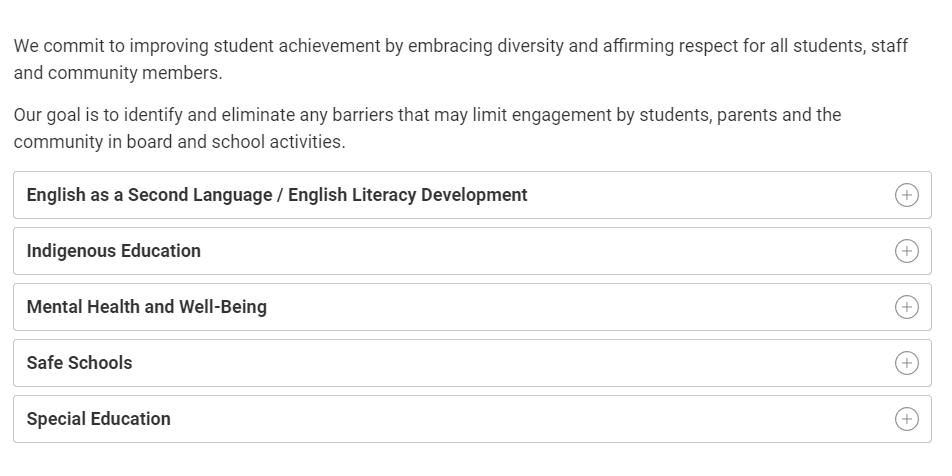

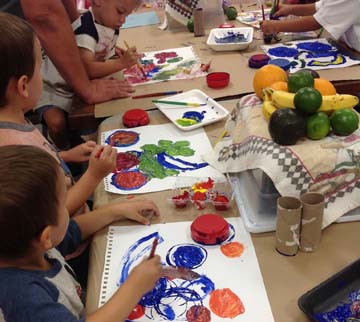 s of young students I often observe children creating; building, painting, sculpting…. I ask them to tell me about their work. I sometimes observe them looking their creation over….pausing and, depending on what they observe, decide in that moment what their creation is destined to be. This, and the dialogue that follows, are valuable moments in inquiry learning. Although function can follow form with ease in an inquiry-based learning environment, form should follow function and students should become the driver when redesigning spaces for learning.
s of young students I often observe children creating; building, painting, sculpting…. I ask them to tell me about their work. I sometimes observe them looking their creation over….pausing and, depending on what they observe, decide in that moment what their creation is destined to be. This, and the dialogue that follows, are valuable moments in inquiry learning. Although function can follow form with ease in an inquiry-based learning environment, form should follow function and students should become the driver when redesigning spaces for learning.
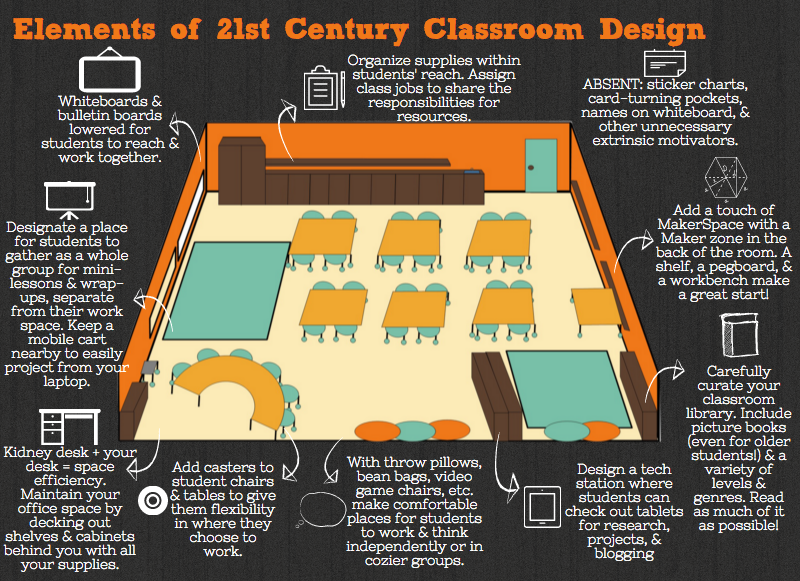
 Consider two scenarios for investing money. In the first scenario the investor shares that, after a series of exchanges with your money, your investment will diminish. Conversely, in a second scenario the investor shares that, after a series of different exchanges with your money, your investment will multiply. If given a choice most people would choose the latter scenario. Consider now that certain interactions with people can have similar outcomes as the scenarios above. Some interactions help people flourish while other types of interactions may cause people to feel inadequate and incapable. My recent reading of an inspiring book called “The Multiplier Effect” explains the practices that multiply or diminish the potential of those you lead. I read this book with an initial focus on school leadership, but immediately drew many connections to parent and educator interactions with students.
Consider two scenarios for investing money. In the first scenario the investor shares that, after a series of exchanges with your money, your investment will diminish. Conversely, in a second scenario the investor shares that, after a series of different exchanges with your money, your investment will multiply. If given a choice most people would choose the latter scenario. Consider now that certain interactions with people can have similar outcomes as the scenarios above. Some interactions help people flourish while other types of interactions may cause people to feel inadequate and incapable. My recent reading of an inspiring book called “The Multiplier Effect” explains the practices that multiply or diminish the potential of those you lead. I read this book with an initial focus on school leadership, but immediately drew many connections to parent and educator interactions with students. their thinking. Or, we can show children how much we know by doing all of the thinking for them.
their thinking. Or, we can show children how much we know by doing all of the thinking for them. Mathematics Goal
Mathematics Goal
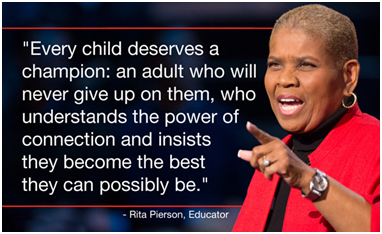 Think of a coach or group leader in your child’s life. Now imagine that, during each practice or performance, the only feedback the coach ever gave was, “Good job,” or “Not so good.” Would that help your child improve? Obviously not. A great coach provides timely feedback, during or immediately after a performance. A great coach shares information with the child about what he/she does well and can improve upon. The feedback to the child is clear, specific, timely and meaningful (e.g. “I liked the way you were in ready position. Next time, you need be out in front of the net for the pass.”). Great teaching and great coaching have a lot in common. Like great coaches, great teachers are committed to ensuring your child reaches their fullest potential. One way a teacher does this is by providing feedback daily, both formally and informally through conversations, questions, discussions, observations, student work, performances (and so much more).
Think of a coach or group leader in your child’s life. Now imagine that, during each practice or performance, the only feedback the coach ever gave was, “Good job,” or “Not so good.” Would that help your child improve? Obviously not. A great coach provides timely feedback, during or immediately after a performance. A great coach shares information with the child about what he/she does well and can improve upon. The feedback to the child is clear, specific, timely and meaningful (e.g. “I liked the way you were in ready position. Next time, you need be out in front of the net for the pass.”). Great teaching and great coaching have a lot in common. Like great coaches, great teachers are committed to ensuring your child reaches their fullest potential. One way a teacher does this is by providing feedback daily, both formally and informally through conversations, questions, discussions, observations, student work, performances (and so much more). to students so that they understand what they have done well and what they need to do next has a more powerful impact on going forward with learning than just knowing a mark or grade.
to students so that they understand what they have done well and what they need to do next has a more powerful impact on going forward with learning than just knowing a mark or grade.
 Educators are working hard to help each student in Thames Valley to grow and learn in math. However, we cannot do it alone and not nearly as well as when students are supported by resources and a caring circle of adults beyond the school. Math beyond the classroom matters …a lot!
Educators are working hard to help each student in Thames Valley to grow and learn in math. However, we cannot do it alone and not nearly as well as when students are supported by resources and a caring circle of adults beyond the school. Math beyond the classroom matters …a lot!


 I am optimistic by nature and setting New Year’s resolutions is no exception. My annual resolutions are usually lofty with traditional goals such as no more sugar in my diet or exercising every day. It is discouraging to know that, statistically, only 8 % of people actually maintain their resolutions. Why is this? I believe it is because lofty goals are vague, difficult to attain, and unrealistic. By their nature, New Year’s Resolutions set most people up for failure.
I am optimistic by nature and setting New Year’s resolutions is no exception. My annual resolutions are usually lofty with traditional goals such as no more sugar in my diet or exercising every day. It is discouraging to know that, statistically, only 8 % of people actually maintain their resolutions. Why is this? I believe it is because lofty goals are vague, difficult to attain, and unrealistic. By their nature, New Year’s Resolutions set most people up for failure.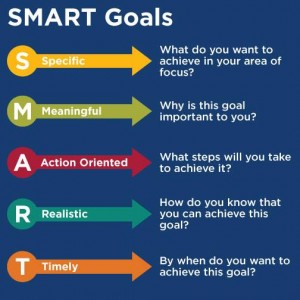 Cutting out sugar is neither realistic nor attainable for me but I know that I can achieve success with smaller steps like first cutting out sweets when I pack my lunch for school each day. I plan to reflect on how I am doing and tweak things a little if I am not being successful (like maybe adding a healthy afternoon snack to get me through until supper time). Once I am successful, I will move to a next step such as focusing on how I can prepare easy-to-make, healthy suppers. I will commit to ensuring my personal goals are simple, realistic, and attainable. With this approach I believe I will be more likely to maintain success over the long term.
Cutting out sugar is neither realistic nor attainable for me but I know that I can achieve success with smaller steps like first cutting out sweets when I pack my lunch for school each day. I plan to reflect on how I am doing and tweak things a little if I am not being successful (like maybe adding a healthy afternoon snack to get me through until supper time). Once I am successful, I will move to a next step such as focusing on how I can prepare easy-to-make, healthy suppers. I will commit to ensuring my personal goals are simple, realistic, and attainable. With this approach I believe I will be more likely to maintain success over the long term.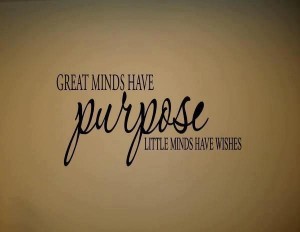 Years ago I had the opportunity to hear a guest speaker share stories of people who lived unusually lengthy lives. Each of these individuals shared a common quality; a strong sense of purpose in their lives. Having purpose (or not having purpose) has a powerful impact on performance and attitude. My teenage son is currently struggling with purpose as he transitions from a busy life playing sports to waiting eagerly to find a part time job. I find myself feeling the same way sometimes as my children begin to develop their independence. In contrast, I thrive when I set goals, when my help is needed and when I am surrounded with things that need to be done.
Years ago I had the opportunity to hear a guest speaker share stories of people who lived unusually lengthy lives. Each of these individuals shared a common quality; a strong sense of purpose in their lives. Having purpose (or not having purpose) has a powerful impact on performance and attitude. My teenage son is currently struggling with purpose as he transitions from a busy life playing sports to waiting eagerly to find a part time job. I find myself feeling the same way sometimes as my children begin to develop their independence. In contrast, I thrive when I set goals, when my help is needed and when I am surrounded with things that need to be done.